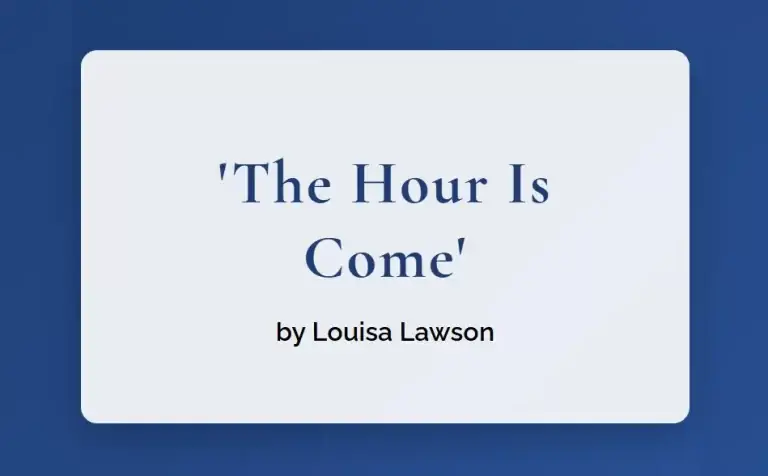The intersection of poetry and politics has long been a fertile ground for social change, and few works exemplify this better than Louisa Lawson’s “The Hour Is Come.” As the mother of renowned Australian poet Henry Lawson and a formidable literary figure in her own right, Lawson wielded her pen with precision and purpose, crafting a rallying cry for women’s suffrage that still resonates today.
Table of Contents
The Dawn of a Movement: Historical Context
“The Hour Is Come” emerged during a pivotal moment in Australian history, when the women’s suffrage movement was gaining momentum in the 1890s. Lawson, often called “the mother of womanhood suffrage in New South Wales,” published this piece in her feminist journal The Dawn, which she founded and edited from 1888 to 1905. The journal itself became a powerful platform for women’s voices, with Lawson at its helm, challenging patriarchal norms through both prose and poetry.
Poetic Architecture: Form Meets Function
The technical brilliance of “The Hour Is Come” lies in its masterful fusion of form and message. Lawson employs a martial rhythm that mirrors the determined footsteps of suffragettes marching for their rights. The poem’s structure becomes a metaphor for the movement itself:
- Strong iambic meter creating a drumbeat of progress
- Strategic caesuras that demand attention and reflection
- End-rhyme scheme that reinforces the militant tone
- Repetition of the title phrase as both warning and promise
The Language of Liberation
Martial Imagery
Lawson transforms the suffrage movement into a righteous battle through carefully chosen military metaphors:
“Stand fast, unite, and who shall bid us nay?
The hour has struck, and Tyranny’s at bay!”
These lines demonstrate how Lawson reimagines domestic spaces as battlegrounds, with women as warriors in a noble cause. The imperative verbs “Stand” and “unite” function as both poetic devices and literal calls to action.
Temporal Urgency
The poem’s title and its repetition throughout create a sense of historical inevitability. Lawson presents women’s liberation not as a possibility but as an unstoppable force:
“The hour is come—the hour when souls must dare
To rend the chains that coward customs wear”
Revolutionary Rhetoric: A Technical Analysis
What sets “The Hour Is Come” apart is its sophisticated blend of poetic technique and political message. Lawson employs:
- Anaphora for emphasis and momentum
- Metaphorical chains representing societal constraints
- Natural imagery suggesting organic, inevitable change
- Strategic enjambment creating tension and release
The final stanza delivers the poem’s most powerful statement:
“The hour is come—the hour to rend our chains,
To stand erect, free-souled beneath the sun”
These lines encapsulate the central metaphor of physical and spiritual liberation, with the image of standing “erect” serving as both literal posture and metaphorical awakening.
Contemporary Resonance and Legacy
The enduring power of “The Hour Is Come” lies in its universal themes of justice and equality. Its core message about systemic change and collective action continues to inspire modern social justice movements. The poem’s key elements remain relevant:
- Universal language of uprising
- Emphasis on collective rather than individual action
- Strategic balance of anger and hope
- Clear vision of social transformation
Reader Engagement: Questions for Reflection
- How does Lawson’s use of martial imagery compare to other protest poetry of her era?
- What parallels can we draw between the suffrage movement and contemporary social justice causes?
- How does the poem’s structure reinforce its revolutionary message?
- In what ways do Lawson’s metaphors transcend their historical context?
Conclusion: The Eternal Hour
More than a century after its publication, “The Hour Is Come” remains a masterclass in protest poetry. Its sophisticated blend of formal technique and revolutionary spirit continues to offer lessons for contemporary poets and activists alike.
The poem reminds us that great social changes often begin with words—carefully chosen, strategically deployed, and powerfully delivered. In an era when we still grapple with questions of equality and justice, Lawson’s voice rings out with undiminished clarity and urgency.


